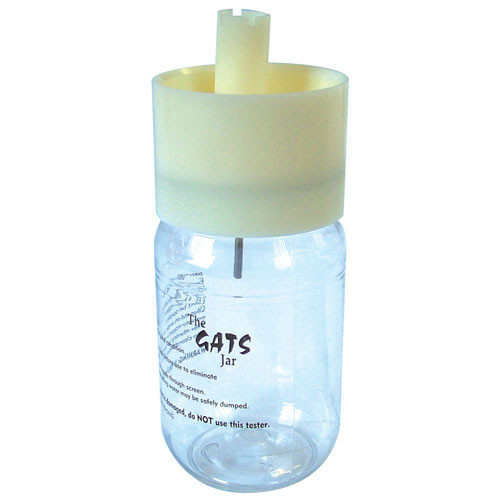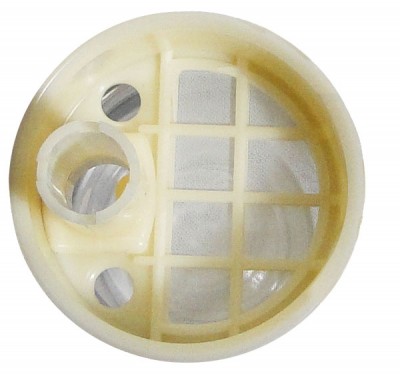Gats Jar Fuel tester
Watch this product and we will notify you once it is back in stock.
Gats Jar Fuel tester
The separator screen is made of a material that when coated with petroleum based fuels creates a barrier to the passage of water through it, but remains no obstacle to the flow of fuel. It is important to tip the tester only far enough to pour the fuel out through the screen, but not so far that the liquid level ever goes above the top of the screened opening. To work properly the separator screen must be coated with fuel before it is exposed to water. If water should impregnate the screen it must be removed before it can be used for fuel purification. To clear the separator screen of water, use a dry absorbent tissue or cloth and wipe the top of the screen surface thoroughly. The separator screen works equally well with jet fuel or AVGAS. The screen mesh also provides particulate debris filtration to approximately 200 microns. Warning: If the separator screen is damaged, do not use the tester.
The sump actuator is reversible in order to operate all styles of sump valves. The actuator fits in the hole provided, with the slightly curved side of its collar against the inside wall of the separator housing. This registers the actuator probe to its most central position and keeps it from turning while it’s being used.
To test for jet fuel contamination with the GATS jar, coat the separator screen with the fuel sample. This is done when the extracted fuel is returned to the aircraft fuel tank. After emptying the tester turn the screen upright, so it can be blown on gently with one’s breath at a distance to avoid breathing in gas fumes. The heat in the exhaled breath will evaporate the AVGAS within roughly 30 seconds regardless of the ambient temperature. AVGAS alone will leave the holes of the screen empty and the screen looking dry. Jet fuel, if present, will remain in some of the screen holes in a random patter after the AVGAS has evaporated, in approximately the same proportion as the fuel mixture inside the fuel tank. With a little practice as little as 5% jet fuel contamination can be detected with this method, in any environment, and in any season. A safe percentage of jet fuel mixed into AVGAS has never been established. Therefore, if it can be detected, it should be considered too much.


